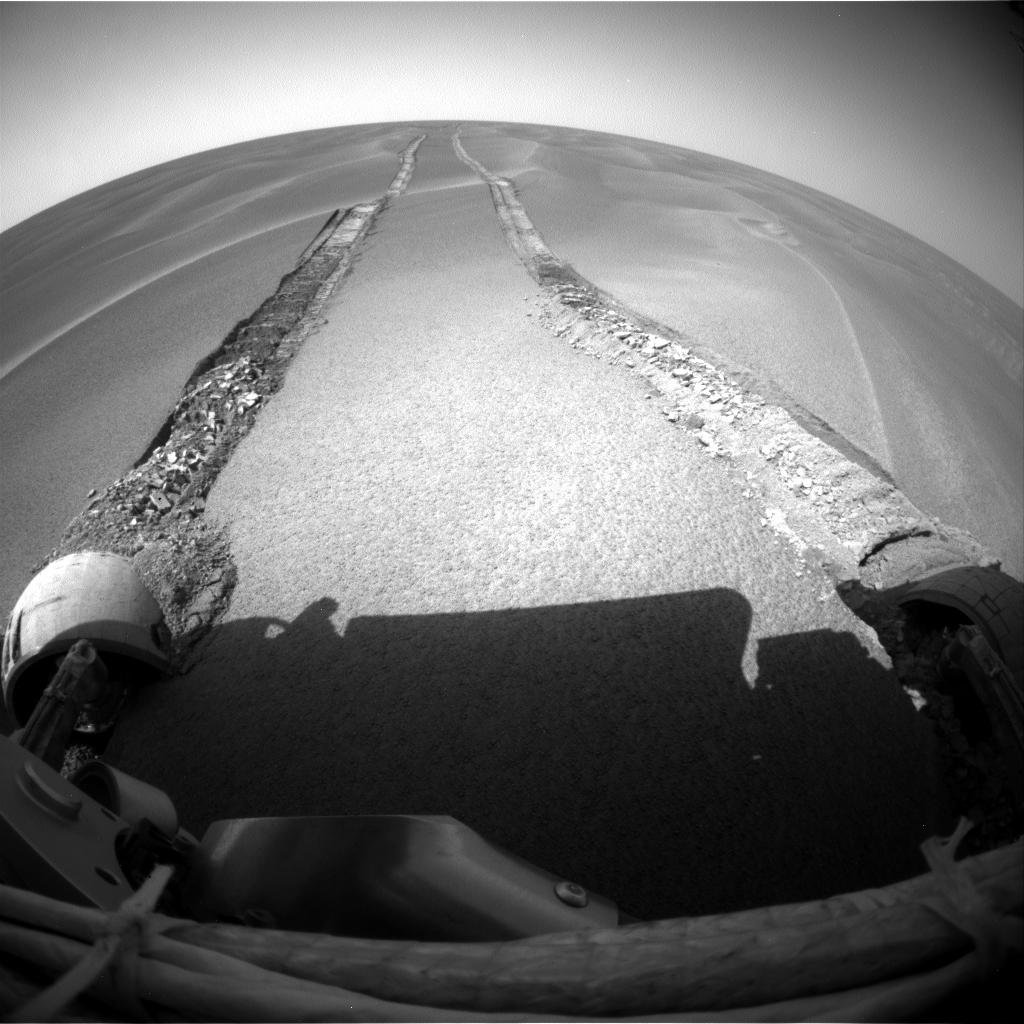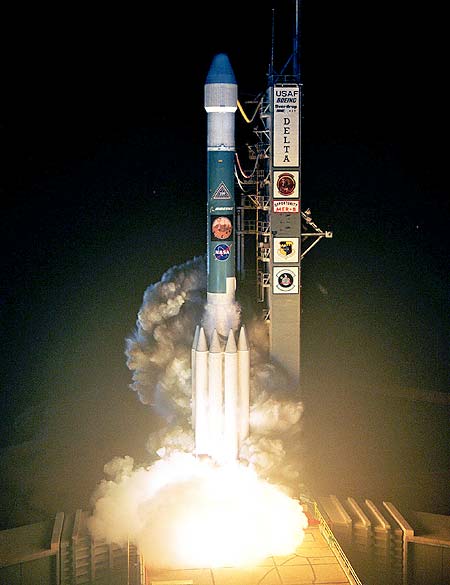
Since August 2011, NASA’s Mars Exploration Rover Opportunity has been exploring the rim of a 14-mile-wide crater called Endeavour that is geologically very distinct from anything the robot craft had previously encountered. Ancient rocks and clay minerals that may have been laid down in the presence of water are among the attractions of this site.

For 22 months, Opportunity investigated a raised section of the western rim of Endeavour Crater, dubbed Cape York. During this time it made the key discovery that a formation known as Homestake was composed of gypsum—“slam dunk” evidence, mission scientists agreed, that water had once flowed through underground fractures in the rock.
About six weeks ago, the rover began heading south, from the southern end of Cape York toward another raised part of the crater rim called Solander Point. En route—on May 16, 2013—Opportunity became the most traveled NASA vehicle on the surface of a world other than Earth, surpassing the 35.74 kilometers covered by the Apollo 17 Lunar Roving Vehicle.
Opportunity has now less than 800 meters to go to complete its 2-kilometer trek from Cape York to Solander Point and is making good progress across a lower, flatter area that researchers have christened Botany Bay. Conditions for driving couldn’t be better. Botany Bay is a polygonally fractured outcrop, like a giant crazy paving, lightly covered with dust that doesn’t impede the rover’s wheels. Between the light-colored rocky plates is dark, basaltic soil thickly strewn with the now-familiar “blueberries”—hard, round, BB-size concretions, made mostly of hematite, that have resisted erosion over eons of time.
“The surface that Opportunity is driving across in Botany Bay is polygonally fractured outcrop that is remarkably good for driving,” said Brad Joliff, a member of Opportunity’s science team. “The plates of outcrop, like a tiled mosaic pavement, have a thin covering of soil, not enough to form the wind-blown ripples we’ve had to deal with during some other long treks. The outcrop plates are light-toned, and the cracks between them are filled with dark, basaltic soil and our old friends the ‘blueberries.'”
Rising in the middle distance is Opportunity’s next goal, Solander Point, the unmistakable landmark directly ahead. Geologically, this piece of high ground offers more rich pickings, including a lofty cross section of rock strata and the prospect of more clay minerals indicative of a habitable past. But it presents the rover with its toughest mountain climb yet. Mission planners are keen to avoid the steeper approaches, possibly by driving part way up Solander Point from the west side of the rim, veering left, and then heading down the more severe north-facing slopes where the interesting exposed rock layers are to be found.
As winter reaches the southern hemisphere of Mars, the northern slopes of Solander will be the perfect place for the rover to hang out. Its solar panels will be able to gather the maximum amount of sunlight available, enabling Opportunity to remain active and mobile until spring arrives.
Want to keep up-to-date with all things space? Be sure to “Like” AmericaSpace on Facebook and follow us on Twitter: @AmericaSpace




Imagine, it’s been nearly 10 years since Opportunity landed on Mars! It’s still making outstanding progress on the surface as it continues exploration. What an amazing tribute to the scientists and engineers involved who made this possible. And it’s a fitting reminder to all Americans of our limitless potential in the exploration of space. Happy 4th of July to all!
So well said Tom. America is right to feel proud for its space exploration.
It just occured to me, that having Opportunity survive a nearly full 10 years on Mars and still going, may be a good sign for the prospect of building human habitats on the Moon and Mars. There’s a huge concern about the dust of the Moon and Mars being highly abrasive and the tendency they have to compromise the health of electronic and mechanical equipment. Could the longevity of the Opportunity rover be a positive sign for the longevity of future human constructions on the Moon and Mars?
Happy 4th of July to everyone!
Leonidas: the corrosive effects of dust on the human body is but one of the many obstacles facing manned exploration of Mars. I am convinced that scientists and engineers will solve the problems before committing a human presence on the planet. First and foremost must be speedier transportation. But we’ll suceed!